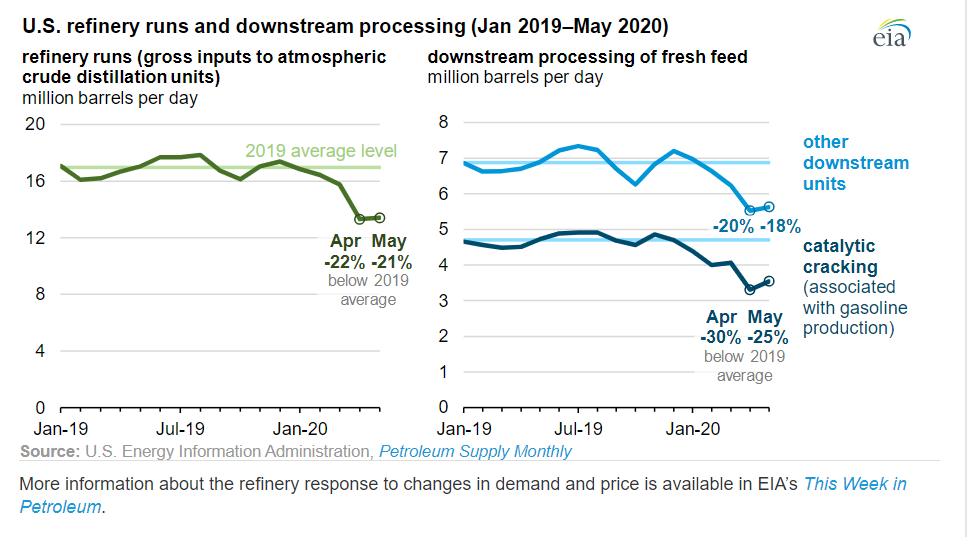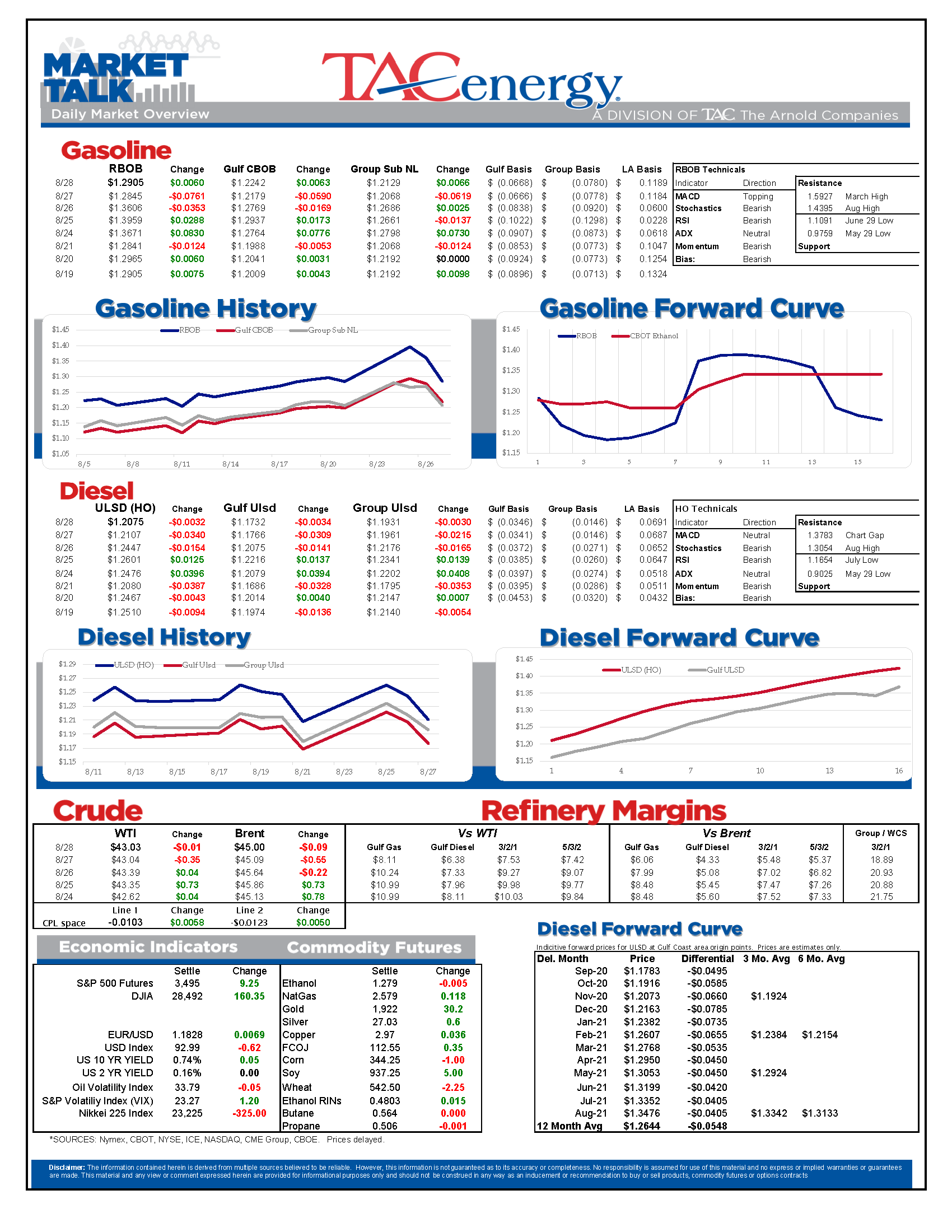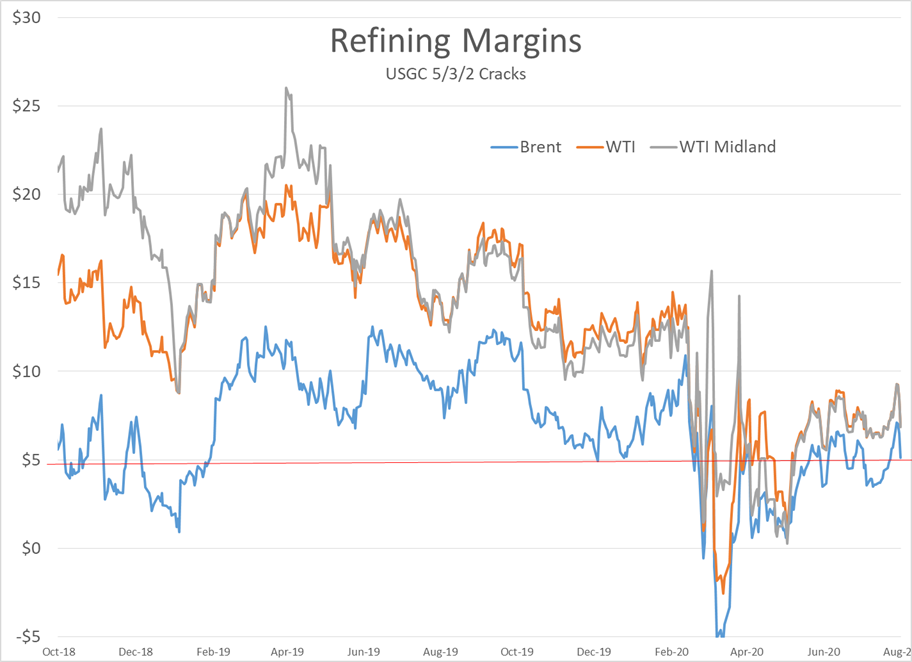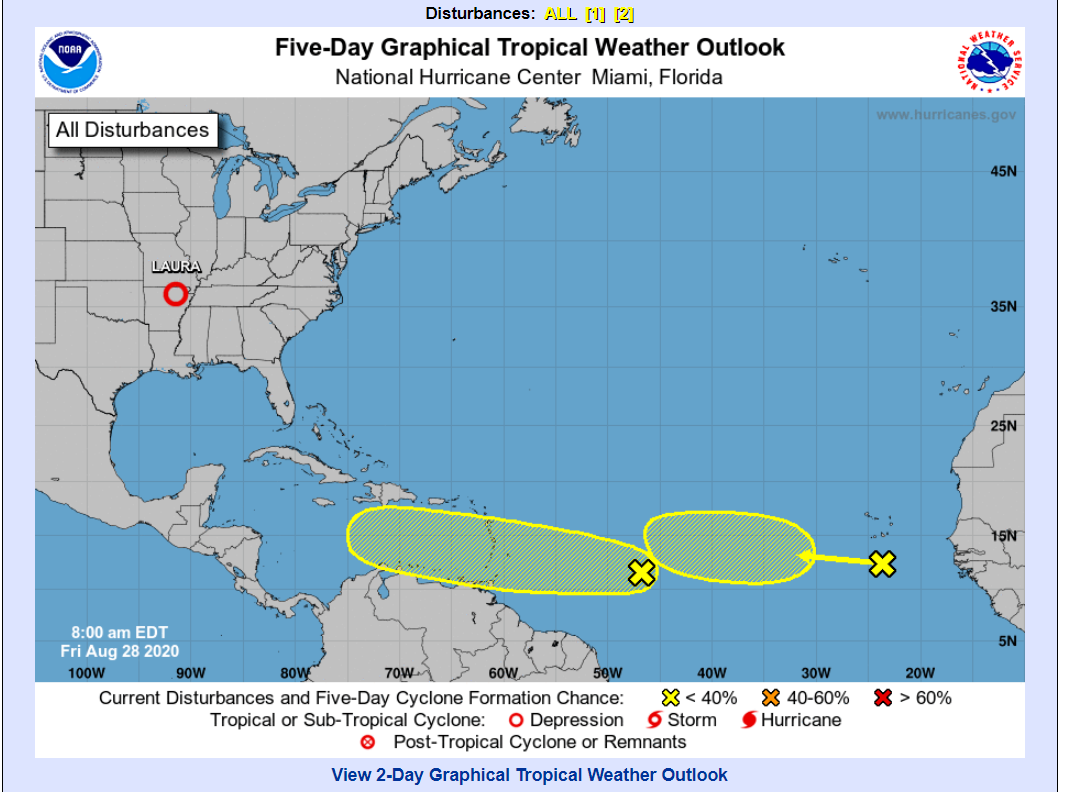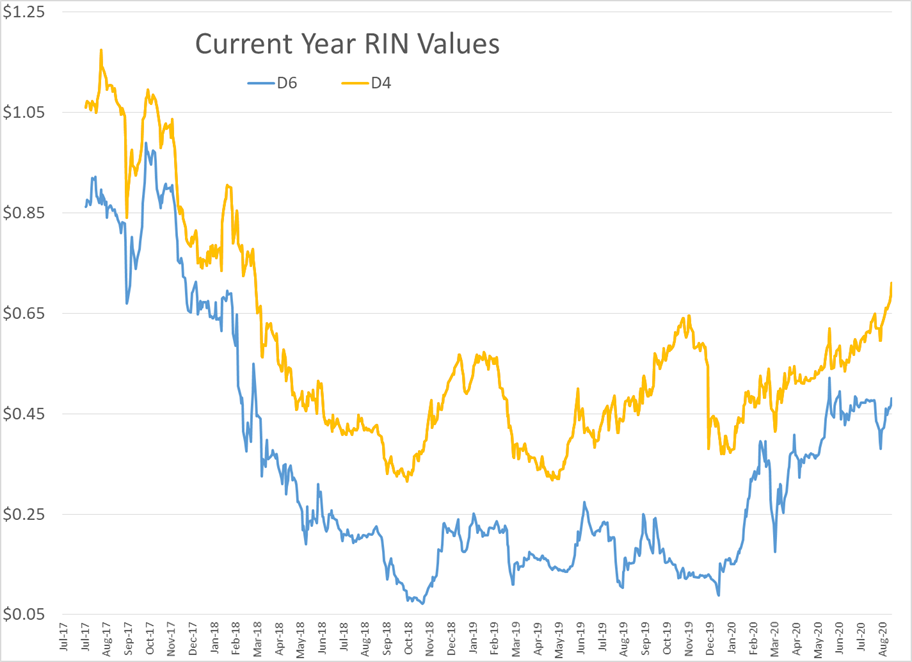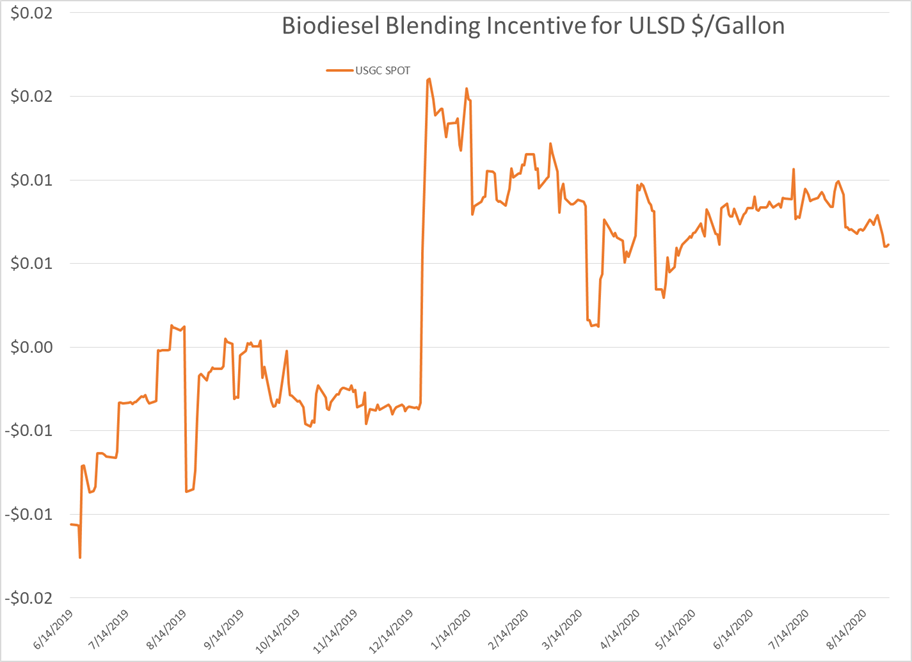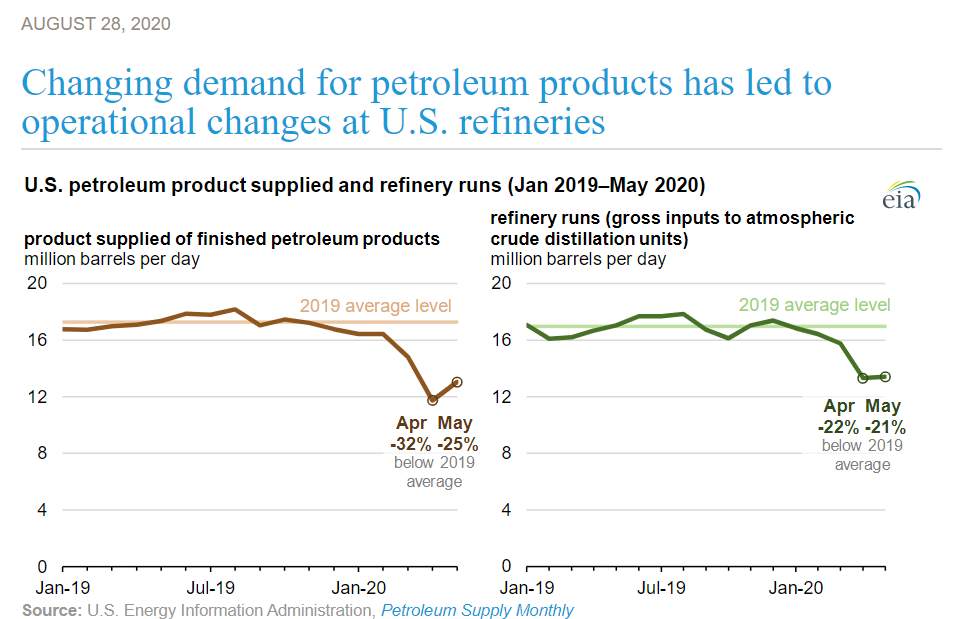Refineries Initiate Restart Efforts

We’ve reached the calm after the storm as the Gulf Coast refining industry is assessing the damage from Hurricane Laura, and most companies seem to be breathing a big sigh of relief. Unfortunately, much of the country is still going to feel an impact from this storm, as flooding potential stretches through the mid-west and east coast through the weekend.
Three of the refineries that had initiated shutdowns ahead of the storm have already filed with the state that they were beginning restart efforts, and more are expected to follow suit today as reports suggest the plants outside of Lake Charles likely avoided major damage thanks to the eastward shift in the storm’s path prior to landfall.
We will probably not know the status of the two refineries that were operating in Lake Charles before the storm until next week, since damage assessment crews were not allowed into the area Thursday. A major fire in a nearby chemical factory, and the closing of the Interstate 10 bridge due to a runaway casino boat are just a couple of examples of issues that may be hampering those efforts.
The one critical unknown in terms of regional supply is whether or not the Colonial station near Lake Charles suffered any damage. The pipeline continues to operate downstream, but if Lake Charles is blocked, the barrels originating in the Houston and Port Arthur hubs won’t be able to move through to the rest of the country. There are no reports that the facilities were damaged, they just don’t know since accessing the location may still take a couple more days. Explorer pipeline reported no damage to its facilities, but will still see slight delays in restart due to uncertainty from the local utilities on power supply.
The bad news for refiners that managed to avoid operational issues during the storm is that the boost in margins was short-lived as both gasoline and diesel prices have crumbled, and are now threatening a technical break to the downside that could drag many plants back to the cusp of break-even levels.
Don’t relax just yet. As is often the case in active hurricane seasons, major hurricanes aren’t isolated events, (i.e. Harvey/Irma/Maria in 2017, Gustav and Ike in 2008, Katrina/Rita/Wilma in 2005). Already this morning, the National Hurricane Center is tracking two new potential systems crossing the Atlantic, both given 30 percent odds of development next week.
D4 (Bio) RINs hit a fresh 2.5 year high Thursday, as surging soybean prices and falling diesel prices gives a poor outlook for incremental bio blending. Exports to China and weather damage from the Derecho earlier in the month are both getting credit for the rally in Soy prices. Corn and ethanol prices have also been rallying, but have not kept pace with bio, partially due to the fact that ethanol blending is less discretionary, which has kept D6 RINs from pushing through recent highs so far.
The EIA this morning took a closer look at how U.S. refineries have been forced to make drastic operational changes this year due to COVID demand impacts. Perhaps the most impressive piece is how the plants have been able to dramatically shift product yields in response to the wild swings in gasoline and jet fuel demand. That unprecedented shift towards diesel production also helps explain why diesel prices barely flinched this week even when it appeared that Laura might shut down 20 percent of the country’s refining capacity.
Click here to download a PDF of today's TACenergy Market Talk.
Latest Posts
Gasoline Futures Are Leading The Way Lower This Morning
The Sell-Off Continues In Energy Markets, RBOB Gasoline Futures Are Now Down Nearly 13 Cents In The Past Two Days
Week 15 - US DOE Inventory Recap
Prices To Lease Space On Colonial’s Main Gasoline Line Continue To Rally This Week
Social Media
News & Views
View All
Gasoline Futures Are Leading The Way Lower This Morning
It was a volatile night for markets around the world as Israel reportedly launched a direct strike against Iran. Many global markets, from equities to currencies to commodities saw big swings as traders initially braced for the worst, then reversed course rapidly once Iran indicated that it was not planning to retaliate. Refined products spiked following the initial reports, with ULSD futures up 11 cents and RBOB up 7 at their highest, only to reverse to losses this morning. Equities saw similar moves in reverse overnight as a flight to safety trade soon gave way to a sigh of relief recovery.
Gasoline futures are leading the way lower this morning, adding to the argument that we may have seen the spring peak in prices a week ago, unless some actual disruption pops up in the coming weeks. The longer term up-trend is still intact and sets a near-term target to the downside roughly 9 cents below current values. ULSD meanwhile is just a nickel away from setting new lows for the year, which would open up a technical trap door for prices to slide another 30 cents as we move towards summer.
A Reuters report this morning suggests that the EPA is ready to announce another temporary waiver of smog-prevention rules that will allow E15 sales this summer as political winds continue to prove stronger than any legitimate environmental agenda. RIN prices had stabilized around 45 cents/RIN for D4 and D6 credits this week and are already trading a penny lower following this report.
Delek’s Big Spring refinery reported maintenance on an FCC unit that would require 3 days of work. That facility, along with several others across TX, have had numerous issues ever since the deep freeze events in 2021 and 2024 did widespread damage. Meanwhile, overnight storms across the Midwest caused at least one terminal to be knocked offline in the St. Louis area, but so far no refinery upsets have been reported.
Meanwhile, in Russia: Refiners are apparently installing anti-drone nets to protect their facilities since apparently their sling shots stopped working.
Click here to download a PDF of today's TACenergy Market Talk.

The Sell-Off Continues In Energy Markets, RBOB Gasoline Futures Are Now Down Nearly 13 Cents In The Past Two Days
The sell-off continues in energy markets. RBOB gasoline futures are now down nearly 13 cents in the past two days, and have fallen 16 cents from a week ago, leading to questions about whether or not we’ve seen the seasonal peak in gasoline prices. ULSD futures are also coming under heavy selling pressure, dropping 15 cents so far this week and are trading at their lowest level since January 3rd.
The drop on the weekly chart certainly takes away the upside momentum for gasoline that still favored a run at the $3 mark just a few days ago, but the longer term up-trend that helped propel a 90-cent increase since mid-December is still intact as long as prices stay above the $2.60 mark for the next week. If diesel prices break below $2.50 there’s a strong possibility that we see another 30 cent price drop in the next couple of weeks.
An unwind of long positions after Iran’s attack on Israel was swatted out of the sky without further escalation (so far anyway) and reports that Russia is resuming refinery runs, both seeming to be contributing factors to the sharp pullback in prices.
Along with the uncertainty about where the next attacks may or may not occur, and if they will have any meaningful impact on supply, come no shortage of rumors about potential SPR releases or how OPEC might respond to the crisis. The only thing that’s certain at this point, is that there’s much more spare capacity for both oil production and refining now than there was 2 years ago, which seems to be helping keep a lid on prices despite so much tension.
In addition, for those that remember the chaos in oil markets 50 years ago sparked by similar events in and around Israel, read this note from the NY Times on why things are different this time around.
The DOE’s weekly status report was largely ignored in the midst of the big sell-off Wednesday, with few noteworthy items in the report.
Diesel demand did see a strong recovery from last week’s throwaway figure that proves the vulnerability of the weekly estimates, particularly the week after a holiday, but that did nothing to slow the sell-off in ULSD futures.
Perhaps the biggest next of the week was that the agency made its seasonal changes to nameplate refining capacity as facilities emerged from their spring maintenance.
PADD 2 saw an increase of 36mb/day, and PADD 3 increased by 72mb/day, both of which set new records for regional capacity. PADD 5 meanwhile continued its slow-motion decline, losing another 30mb/day of capacity as California’s war of attrition against the industry continues. It’s worth noting that given the glacial pace of EIA reporting on the topic, we’re unlikely to see the impact of Rodeo’s conversion in the official numbers until next year.
Speaking of which, if you believe the PADD 5 diesel chart below that suggests the region is running out of the fuel, when in fact there’s an excess in most local markets, you haven’t been paying attention. Gasoline inventories on the West Coast however do appear consistent with reality as less refining output and a lack of resupply options both continue to create headaches for suppliers.

